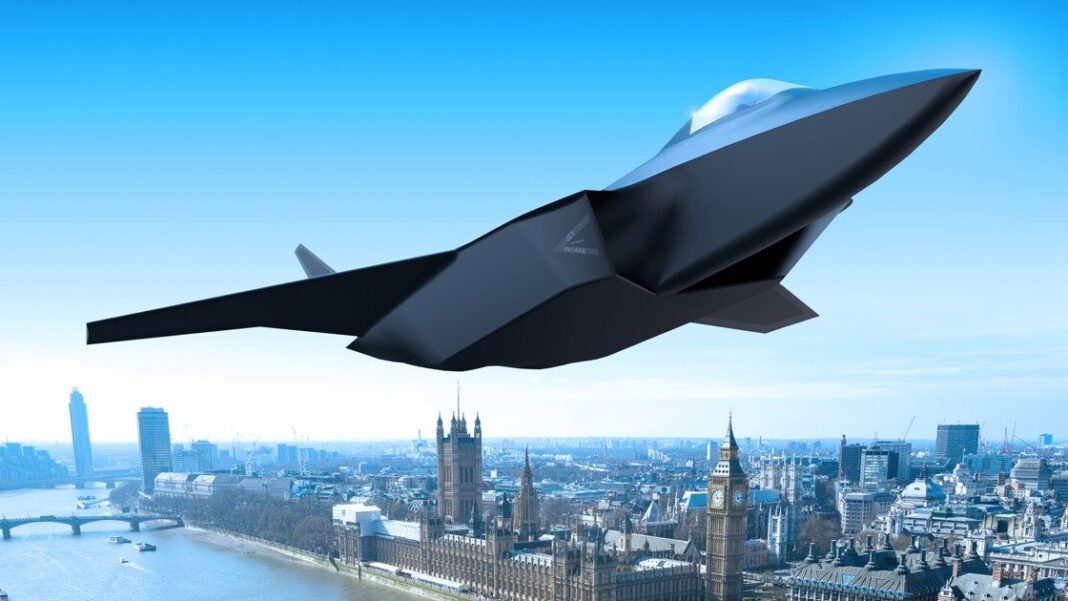Saudi Arabia is showing growing interest in a new international fighter jet program known as GCAP — the Global Combat Air Programme — after being left out of the American F-35 fighter jet deal.
Saudi Arabia’s Fighter Jet Dilemma
The GCAP is a joint effort by the United Kingdom, Italy, and Japan to build a new sixth-generation stealth fighter by 2035. This jet aims to include advanced technology like artificial intelligence, radar-evading stealth, and the ability to work together with drones and satellites in warzones.
Saudi Arabia has long relied on the United States for advanced military aircraft. However, the U.S. has refused to sell the F-35 to the kingdom. This is mainly due to concerns about Saudi Arabia’s ties with China and human rights issues. There’s also a long-standing U.S. policy that prevents Middle Eastern countries from receiving weapons that could challenge Israel’s military edge.
Frustrated with this roadblock, Saudi Arabia began exploring other options. The GCAP program has now caught the country’s attention.
Deadly US F-35 Deployment Escalates Conflict with Houthis in the Middle East
It’s seen as a project with big potential, especially since it’s designed and managed equally by its founding members. This means no single country controls the decisions. Companies from all three nations — BAE Systems (UK), Leonardo (Italy), and Mitsubishi Heavy Industries (Japan) — each own an equal share.
A Quiet Deal Gathers Pace
Saudi Arabia’s interest in GCAP became clearer in early 2025. The kingdom is seeking to join as a financial backer, not as a full technology partner. This setup would allow it to support the program with money, possibly receive the aircraft earlier, and even take part in future profits from sales — without getting direct access to the sensitive military technology.
This approach has led to mixed reactions among GCAP’s members. Italy and the UK appear more open to the idea. Japan, however, has raised concerns. Japan worries about Saudi Arabia’s global image and its ties with countries like China. It has called for limits, saying Saudi Arabia could fund the project but not take part in designing or producing the fighter jets. Japan’s strict laws on arms exports also complicate the issue.
Despite the disagreements, Saudi Arabia has taken steps to build closer defense ties. It has signed agreements with Italian aerospace companies to work on helicopters and other aircraft, which could be a stepping stone toward joining GCAP. These agreements support Saudi Arabia’s Vision 2030 plan, which aims to build a local defense industry and reduce dependence on foreign imports.
Portugal’s Powerful F-16 Jets Replace Costly Dutch F-35s in NATO Baltic Skies Realignment
GCAP vs F-47: A Global Contest in the Skies
While the U.S. pushes ahead with its newest jet, the F-47, Saudi Arabia may be looking for alternatives. The F-47 is part of America’s Next Generation Air Dominance (NGAD) program. It promises powerful new features, like extended range, advanced stealth, and control over unmanned aircraft. However, each F-47 is expected to cost around $300 million, and its production timeline remains uncertain.
The F-35, America’s most widely sold fifth-generation fighter, has also faced serious problems — including delays, rising costs, and concerns about remote control features. Some of America’s allies have started questioning their future involvement in U.S.-made fighter programs.
F-35 Fighter Jet Becomes $2 Trillion Disaster as Allies Abandon Costly Jet Amid Broken Promises
In contrast, GCAP offers a fresh model. The jet is being designed with adaptability in mind, allowing each partner nation to customize features to fit their needs. Its twin-engine setup, AI-assisted systems, stealth shape, and ability to fly at supersonic speeds without afterburners are some of the highlights. The engine is being developed by teams from the UK, Italy, and Japan, combining years of experience.
Saudi Arabia’s participation could help fund the program and lower development costs for everyone. It also offers the kingdom a modern jet without U.S. restrictions. The UK and Italy hope Saudi Arabia’s involvement could attract other buyers, including countries in the Gulf and beyond.
But challenges remain. GCAP’s partners must decide how to bring in Saudi Arabia without disturbing the current balance. With just 10 years to build a next-generation jet, the timeline is tight, and every decision counts.
China’s Veiled Warning to US; WZ-9 Drone Could Detect F-35 and B-21
As of now, Saudi Arabia continues talks with the GCAP partners, signaling a growing desire to shift away from U.S.-controlled military aircraft deals. The outcome may influence not only future air power but also who controls the skies — and with whom.

